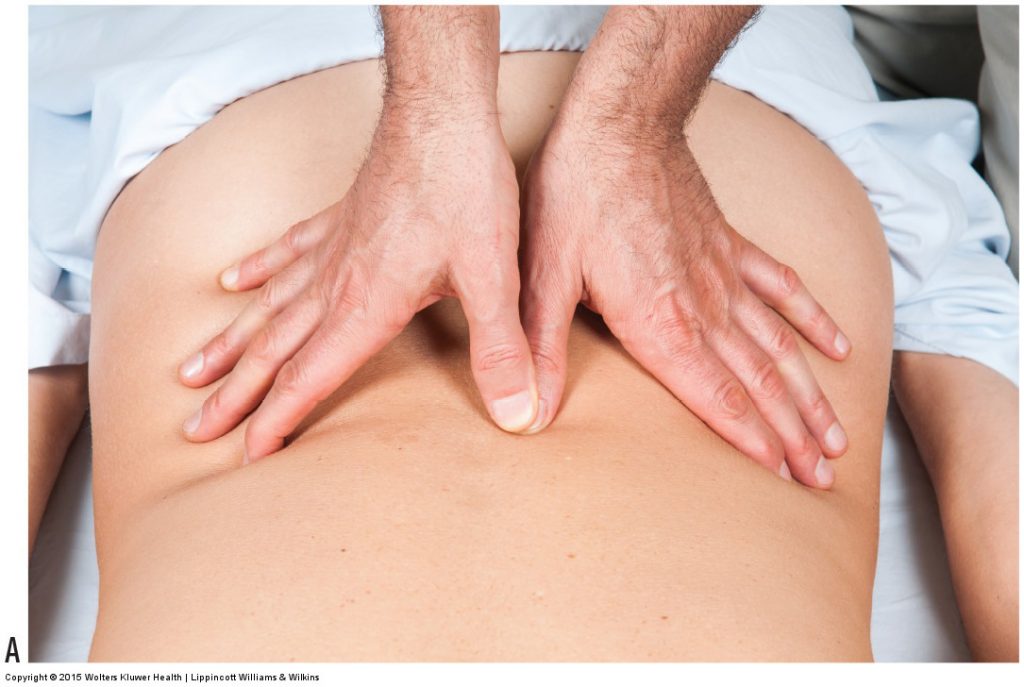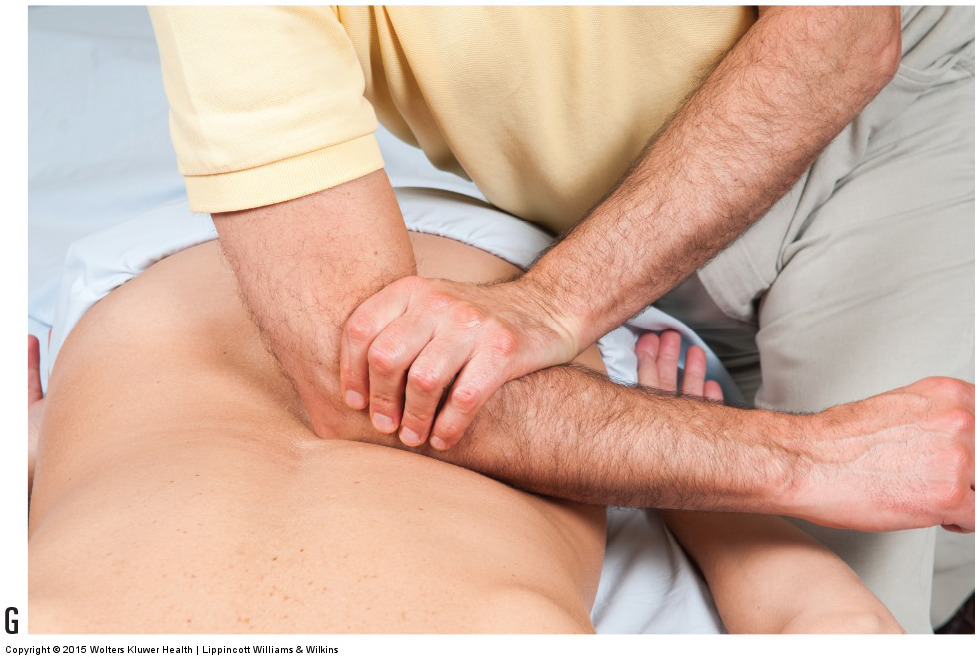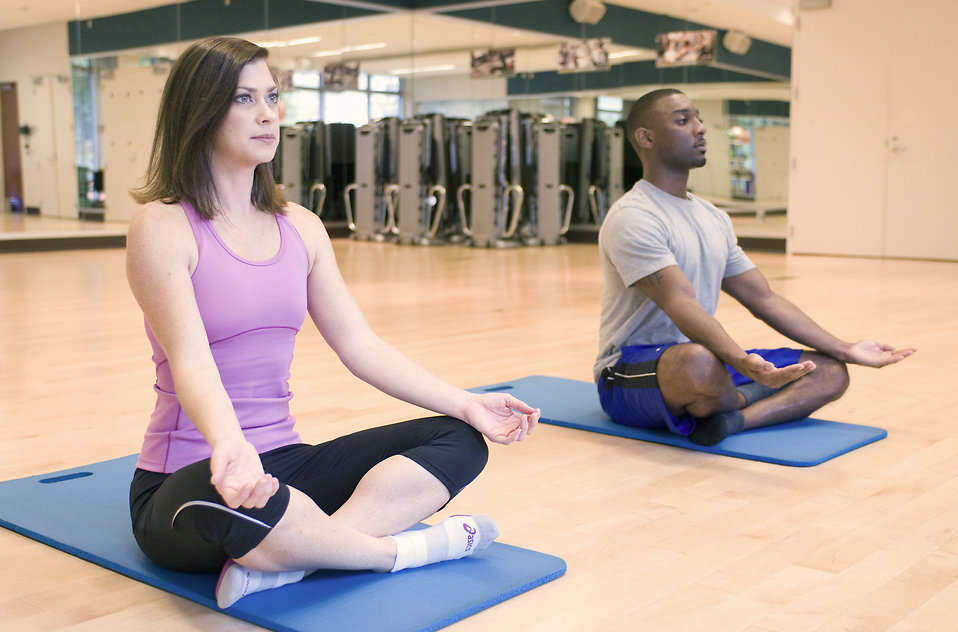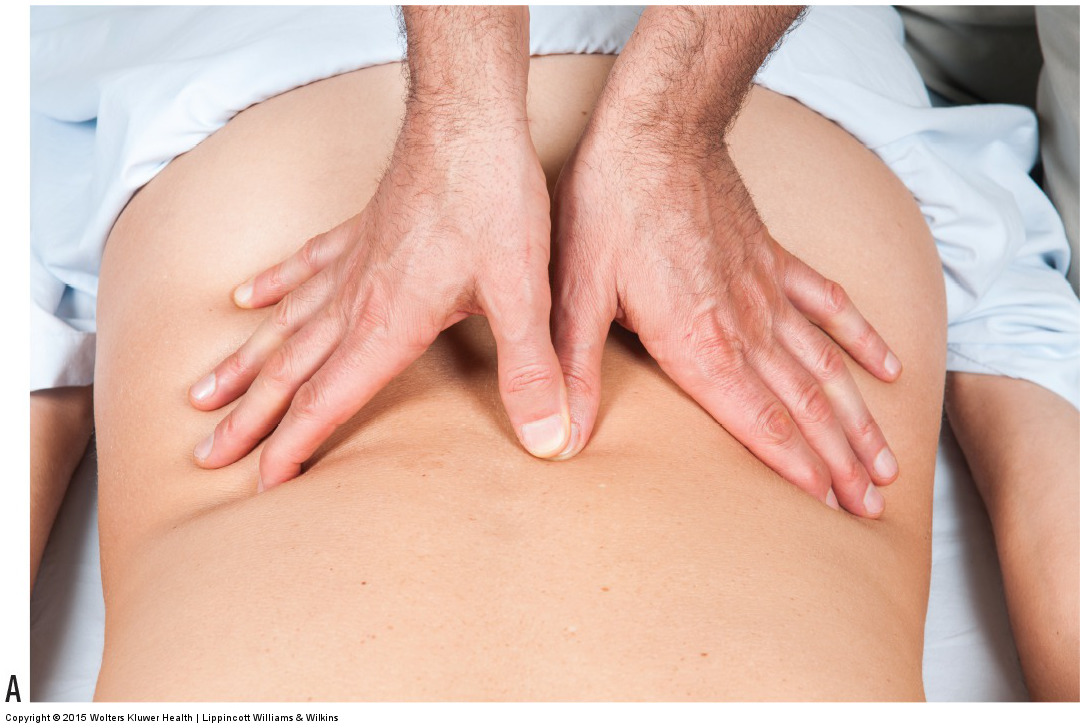This is the 11th in a series of 13 articles on Deep Pressure Massage Technique for the Low Back
Tissue Tension Barrier – Engage the Tissues!

Permission Joseph E. Muscolino. Manual Therapy for the Low Back and Pelvis – A Clinical Orthopedic Approach (2013).
Deep tissue work requires that you engage the client’s tissues. This means that you press in until you feel the tissue tension barrier resistance to your pressure. Once the tissue tension barrier resistance is felt, further pressure then needs to be applied for therapeutic deep pressure work to be done. When performing clinical orthopedic manual therapy, it is only when we challenge tissue beyond the tissue tension barrier that a change is accomplished. So we must go to tissue tension, and then apply slightly more force from there. The more force we add, the more powerful the treatment. However, the more force we add, the more likely that we can hurt/injure the client. So we must always be feeling for the response of the client’s tissues to the work that we are doing. Of course, it is important to stay within your client’s tolerance and to increase your pressure slowly. If deep tissue work being done though, for it to be successful, it is necessary to apply sufficient force for your pressure to translate to the deep tissue layers.

Figure 9G. Permission Joseph E. Muscolino. Manual Therapy for the Low Back and Pelvis – A Clinical Orthopedic Approach (2013).
Note:
Being able to feel tissue tension barriers is the one most important hands-on skill that an orthopedic manual therapist needs. This is true whether the technique being applied is massage, stretching, or joint mobilization. Clinical orthopedic manual therapy only effects change if we reach tissue tension and then apply slightly more force beyond it.
Depth of Work
The depth of deep tissue work should always be within the client’s range of tolerance. It is never beneficial to force deep pressure on a client or to work beyond the client’s tolerance. If this is done, the client may tighten the musculature that you are working on either in response to the pain or in anticipation of pain. Given that one of the principle purposes of massage is to reduce muscle tone, the purpose of the deep pressure is defeated the moment the client tightens up the target muscles being worked on. Further, deep pressure should never be performed in a sudden or abrupt manner. Rather, the client should always be warmed up first with lighter and then moderate depth massage before introducing deep pressure. Even then, it is important to apply deep pressure by slowly and smoothly sinking into the client’s musculature. When the client is properly prepared and the deep work is performed appropriately, clients are often comfortable with very strong pressure.
Focusing the Client’s Breathing
 It can often be helpful to have the client focus on his or her breathing as the work is done. Ask the client to take in a full breath; as the client relaxes and exhales, slowly begin to sink into the client’s tissues. If very deep work is needed, this procedure may be repeated two or three times before the full depth of the pressure is reached. It can be even more helpful for the therapist to breathe with the client. As the client inhales, the therapist inhales; and as the client exhales, the therapist exhales with them. Mirroring their breathing facilitates client relaxation and the therapist synchronizing with the rhythm of the client.
It can often be helpful to have the client focus on his or her breathing as the work is done. Ask the client to take in a full breath; as the client relaxes and exhales, slowly begin to sink into the client’s tissues. If very deep work is needed, this procedure may be repeated two or three times before the full depth of the pressure is reached. It can be even more helpful for the therapist to breathe with the client. As the client inhales, the therapist inhales; and as the client exhales, the therapist exhales with them. Mirroring their breathing facilitates client relaxation and the therapist synchronizing with the rhythm of the client.
This is the 11th of 13 articles on Deep Pressure Massage for the Low Back.
The thirteen articles are:
- Introduction to Deep Pressure Massage to the Low Back
- Deep Pressure Massage to the Low Back – Choosing the Right Table
- Deep Pressure Massage to the Low Back – Overview
- Deep Pressure Massage to the Low Back – Client and Therapist Positioning
- Deep Pressure Massage to the Low Back – Positioning the Feet
- Deep Pressure Massage to the Low Back – Choosing the Treatment Contact
- Deep Pressure Massage to the Low Back – Support Your Treatment Contact
- Deep Pressure Massage to the Low Back – Use Stacked Joints
- Deep Pressure Massage to the Low Back – Apply Pressure Perpendicularly
- Deep Pressure Massage to the Low Back – Use Body Weight
- Deep Pressure Massage to the Low Back – Tissue Tension Barrier
- Deep Pressure Massage to the Low Back – Deep Strokes
- Deep Pressure Massage to the Low Back – Forward Head Posture


